Medieval Warm Period
description: time of warm climate in the North Atlantic region lasting from c. 950 to c. 1250
20 results
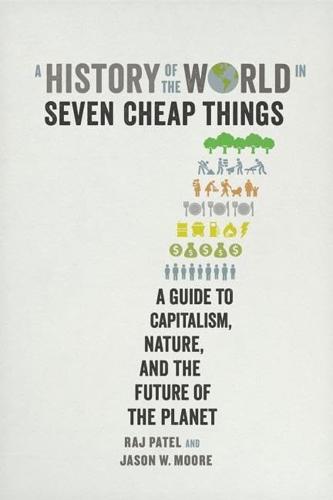
A History of the World in Seven Cheap Things: A Guide to Capitalism, Nature, and the Future of the Planet
by
Raj Patel
and
Jason W. Moore
Published 16 Oct 2017
As Guy Bois notes in his classic study of Norman feudalism, a transition to different ways of working land, with more peasant autonomy and power over what and how to grow, would have allowed medieval Europe to feed up to three times as many people.32 But that transition never happened, and feudal arrangements staggered on until receiving a final coup de grace in 1347: the Black Death.33 Europe emerged from the Medieval Warm Period in poor shape. The structures that had produced sufficient food to nourish peasants and cities from the beginning of the second millennium weren’t able to cope with the changing climate, casting a growing layer of the population into malnutrition.34 Eleventh-century bodies exhumed from English cemeteries show better health than those from the thirteenth century.35 The food shortages at the end of the Medieval Warm Period made European bodies more vulnerable to disease, and the Black Death turned this vulnerability into an apocalypse.
…
As he told it, his peers had dishonored nature and allowed the hills to be stripped bare.20 Plato’s is a romanticized—and almost certainly false—history of periurban Athens.21 Our analysis points not to a deficit of honor but to what happened, by accident, when a marginal tributary of West Asian civilization experienced a crisis of climate, disease, and society. We begin our story a few centuries before the dawn of capitalism, in a place with aspirations to the riches and civilizations of Central and East Asia but poorer by far,22 in a time made by weather. We begin in feudal Europe. The Medieval Warm Period was a climate anomaly that ran from about 950 to 1250 in the North Atlantic.23 Winters were mild and growing seasons were long. Cultivation spread northward and upward: vineyards sprouted in southern Norway, and grain farms climbed mountains and highlands from the Alps to Scotland.24 Human numbers in Europe swelled, nearly tripling—to seventy million—in the five centuries after 800.25 England’s population peaked around 1300 and wouldn’t reach that level again until the end of the seventeenth century.26 The agricultural surplus grew even faster.
…
Feudalism’s most important feature was its capacity to sustain massive and ongoing settler expansion without centralized authority. To do this, it relied on cultivation—the greatest conqueror of all. By the fourteenth century, agriculture took up a third of all European land use, a radical, sixfold increase over the previous five centuries, much of it realized at the expense of forests.27 Feudal Europe rode the Medieval Warm Period until its peak around 1250, when the climate turned colder—and wetter. After centuries of relative food security, famine returned, and with a force all the greater for smashing against a civilization used to altogether different weather. In May 1315, massive rains struck across Europe, possibly as a result of the eruption of New Zealand’s Mount Kaharoa.28 They did not relent until August, when the deluge ended with an early cold snap.
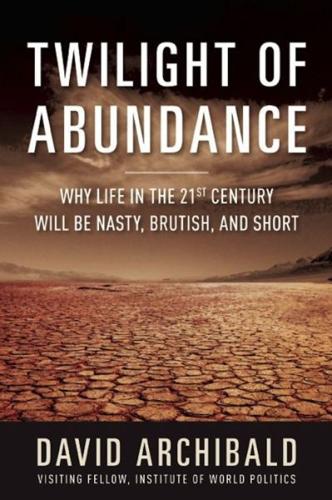
Twilight of Abundance: Why the 21st Century Will Be Nasty, Brutish, and Short
by
David Archibald
Published 24 Mar 2014
Climatologists refer to the twentieth century as the Modern Warm Period. It was preceded by the Little Ice Age, from 1350 to 1900, which in turn followed the Medieval Warm Period. The peak of the Medieval Warm Period was 2° warmer than today and the Little Ice Age 2° colder at its worst—giving a total range in average temperatures of 4°C. By comparison, the warming over the twentieth century was only 0.7°C. The recent warming has melted ice on some high passes in the Swiss Alps, uncovering artifacts from the Medieval Warm Period and the prior Roman Warm Period. The implication is that the world is only now approaching the warmth of those periods.
…
We can be almost as certain that a severe solar-driven cooling event is in train. Instead of the Northern Hemisphere grain belts moving north, they will be moving south. The U.S. Corn Belt will move toward the Sun Belt, just as the northern limit of American Indian corn growing moved three hundred kilometers south between the Medieval Warm Period and the Little Ice Age. Grain production in Canada will become difficult. Norway’s wheat production is already down 48 percent from its peak in 2007 because of cold, wet summers. Total world grain stocks were about 330 million metric tons at year-end 2013, only 14 percent of annual demand.
…
H., 25–26 Lassen, Knud, 5–6, 20–21 Le Monde, 140 Lewis, Hal, 168 Libby, Leona, 26–27, 35 Libya, Libyans, 35, 54–55, 91–92, 98 Lincoln, Abraham, x Literary and Philosophical Association of Manchester, 36 Little Ice Age, 2, 14–16, 22, 27, 38 London, 15, 122 Lord Byron, 40 Lovelock, James, 8 Luttwak, Edward, 108 M Macmillan, Harold, 71 Maine, 21, 38 maize, 66 Malaysia, 68, 109 Mali, 83–84, 98 MAN Group (Germany), 114 Manhattan Island, 15–16 Manhattan Project, the, 88 Mao Zedong, 57–58, 64–65, 179 Markham, Adam, 29 marriage, vii–viii, 51, 81 Marshall Plan, the, 72 Mauas, Pablo, 23 Medieval Warm Period, 2, 15 MENA region, 43–69, 180. See also Middle East Mexico, 58–59, 68 Midale, Saskatchewan, 149 Middle East, 2–3, 48, 53, 74, 81, 84, 94. See also MENA region Milankovitch, Milutin, 16–17 Mills, Peter, 115, 125 Mischief Reef, 110 Mississippi River, 37 Modern Warm Period, 15, 19 Mohammedanism, 82–83 Moir, Ralph, 163 Morocco, Moroccans, 43, 45, 53, 68 Morsi, Mohammed, 50–51, 97–98 Mount Pinatubo, 13, 37 Mount Tambora, 38–41 Mubarak, Hosni, 50–51, 94 Muslim Brotherhood, 50–51, 96 Muslims, 51, 72–73, 82, 99–100 N Nagasaki, 88, 103–4 Nasco (chemical supplier), 106 National Academy of Sciences, 28 National Center for Atmospheric Research, 22 National Humiliation Day (China), 112 Nationalists (China), 112–13 National Petroleum Council, 144 National Solar Observatory, 22 Natuna Islands, 109 natural gas, 143, 145–47, 149–52, 154, 160, 164, 172, 186 Natural Gas Act (1938), 146 Nebraska, 24, 154 New Guinea, 108 New Orleans, LA, 37 New York Times, 111 Nile River, 51 Ningxia CTL project, 114 Nixon, Richard, 170 Non-Integrated Gap (“Non-Core”), 74, 77–78, 80–81, 180 Norfolk, CT, 38 North American Free Trade Agreement (NAFTA), 59 North Atlantic, the, 19 North Atlantic Oscillation, 20 Northern Hemisphere, the, 2, 20–21, 35, 80 Northern Ireland, 21 North, Gerry, 30 North Korea, 92–93, 96–97, 175 North Sea, 25, 141 Norway, 2, 17, 21, 68, 141 nuclear energy, 184 Nuclear War Survival Skills, 62 nuclear weapons, 88–89, 103, 106 Afghanistan and, 47 Algeria and, 53, 98 Azerbaijan and, 102 Cold War and, 85 “guaranteed second strike,” 101 Hiroshima and Nagasaki, 88–89, 103 India and, 90–91, 93 Iran and, 86, 94, 98, 100, 122–23 Israel and, 96 Libya and, 54, 98 MENA region and, 44, 84, 94 Pakistan and, 3, 47, 86, 91–93, 95–96 Saudi Arabia and, 93 thorium and, 159 Nunes, Devin, 149 O Oak Ridge National Laboratory, 159, 163 Obama administration, 51, 94, 147 Obama, Barack, 51, 78–79, 110, 115, 119, 159, 162, 170, 180 Operation Long March, 115, 126–27, 129, 134 Operation Searchlight, 91 Organisation for Economic Co-operation and Development (OECD), 69, 72–74, 76–77, 140 Organisation for European Economic Co-operation, 72 Organization of Petroleum Exporting Countries (OPEC), 114, 140, 142, 151 Ortiz, Carmen M., 78–79 Ottoman Empire, the, 51 P Pacific decadal oscillation (PDO), 14 Pakistan, 3, 46–47, 68, 86, 90–96, 119, 151–52, 179–80 Pandolfi, Louis, 26–27, 35 Papua New Guinea, 32 Parana River, 23 Patriot launchers, 97, 132–33 Pentagon, the, 3, 36, 74, 108 149 Pentagon’s New Map, The, 74 People’s Liberation Army Air Force, 126, 130 People’s Liberation Army Human Intelligence, 134 People’s Liberation Army Navy, 126–27 Performance of Wind Farms in the United Kingdom and Denmark, The, 155 Persian Gulf, 54, 56–57, 93, 138 Philippines, the, 13, 37, 68, 102, 109–10, 119, 122 Piceance Basin (Utah), 161 plutonium, 87–91, 93, 96, 98, 100, 103, 158–59, 162–63, 170 plutonium-238 (Pu238), 87 plutonium-239 (Pu239), 87–88, 104 plutonium-240 (Pu240), 87–88, 159 plutonium-241 (Pu241), 87 plutonium-242 (Pu242), 87 Podhoretz, Norman, 100 Portland, ME, temperature record, 21 Predators (drones), 48, 83 Prithvi missile, 91 private property, 73–77, 80, 180 Providence, RI, temperature record, 2 Prussian blue, 105–6 Q Quinones, Manuel, 114 R Rae, Mike, 29 Rafsanjani, Hashemi, 57, 100 Reagan, Ronald, 170 Rech, Olivier, 140 Red Hackers Union (RHU), 111 Red Sea, the, 53–54, 56 Renewable Energy Foundation, the, 155 Repsol (oil company), 76 Rickover, Hyman, 184, 186–87 Rise of China vs. the Logic of Strategy, The, 108 Rishbeth, H., 27 River War, The, 82 “Roadmap for America’s Energy Future,” 149 Rocky Mountains (“Rockies”), 24 Roman Empire, the, vii Roman Warm Period, 15 Royal Society, the, 28, 169 Russia, 68, 102, 113, 118, 120 Afghanistan and, 46–47 agriculture in, 46–47, 53, 59–60 climate and, 2, 21, 65 as Core country, 74, 77 heroin deaths in, 45 weapons of, 90, 98, 101, 162–63 Ryan, Paul, 149 Ryukyu island chain, 116 S Sacramento Peak, NM, 22 San Francisco Chronicle, 170 Saturn, 17 Saudi Arabia, Saudis, 51, 68, 81, 93–94, 98 collapse of, 45 grain consumption and production, 44, 54 oil production of, 58, 139 population of, 54 role in Middle East relations, 92–93 Schatten, K.
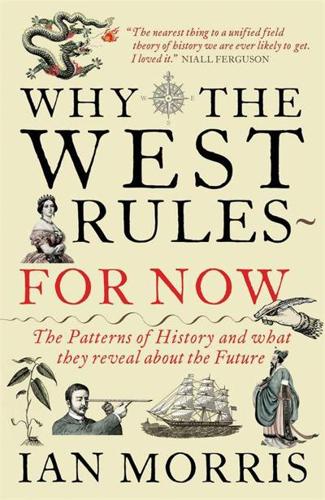
Why the West Rules--For Now: The Patterns of History, and What They Reveal About the Future
by
Ian Morris
Published 11 Oct 2010
Assassination could not roll back the Sunni Revival, but neither could an intellectual movement—despite its success—hold together a Seljuk state, and without the kind of political organization that the Fatimid kingdoms provided in North Africa, the Seljuk lands buckled under the pressures of the Medieval Warm Period. The timing was unfortunate, because the same weather that posed such challenges in southwest Asia created opportunities for the unruly raiders, traders, and invaders on the Muslim core’s European fringe. Equally important, warmer weather brought northern Europe longer growing seasons and higher yields, making previously marginal lands potentially profitable. By the time the Medieval Warm Period wound down, farmers had plowed up vast tracts of what had once been forest, felling perhaps half the trees in western Europe.
…
UNDER PRESSURE As if these strains were not enough, after 900 Eurasia came under a new kind of pressure—literally; as Earth’s orbit kept shifting, atmospheric pressure increased over the landmass, weakening the westerlies blowing off the Atlantic into Europe and the monsoons blowing off the Indian Ocean into southern Asia. Averaged across Eurasia, temperatures probably rose 1–2°F between 900 and 1300 and rainfall declined by perhaps 10 percent. As always, climate change forced people to adapt, but left it up to them to decide just how to do that. In cold, wet northern Europe this so-called Medieval Warm Period was often welcome, and population probably doubled between 1000 and 1300. In the hotter, drier Islamic core, however, it could be less welcome. Overall population in the Muslim world probably fell by 10 percent, but some areas, particularly in North Africa, flourished. In 908 Ifriqiya,* roughly modern Tunisia (Figure 7.8), broke away from the caliphs in Baghdad.
…
The decisive arm in their wars was cavalry, so the Seljuk kings gave great estates to warlords who could provide mounted followers. These nomad chiefs, predictably, let administration and trade decay and even stopped minting coins. Cities shrank, irrigation canals silted up, and marginal villages were abandoned. In the hot, dry weather of the Medieval Warm Period farmers had to struggle constantly just to keep their precious fields from reverting to steppe and desert, but Seljuk policies made their job harder still. Many of the conquerors, preferring nomadic to urban lifestyles, welcomed the decline of agriculture, and as the twelfth century wore on, more and more Arabs left their fields and joined the Turks in herding flocks.
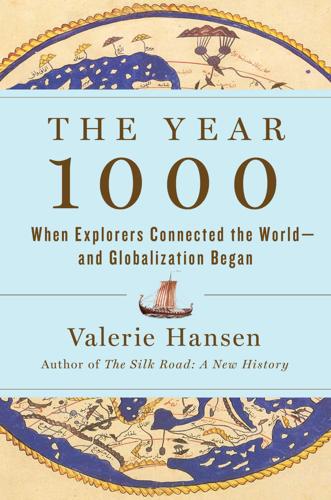
The Year 1000: When Explorers Connected the World―and Globalization Began
by
Valerie Hansen
Published 13 Apr 2020
Moore, The First European Revolution, c. 970–1215 (2000): 30–39, 30 (doubling of population), 33 (population of Córdoba), 46–48 (cerealization). Medieval Warm Period: H. H. Lamb, “The Early Medieval Warm Epoch and Its Sequel,” Paleogeography, Paleoclimatology, Paleoecology 1 (1965): 13–37. Medieval Climatic Anomaly: PAGES 2k Consortium, “Continental-Scale Temperature Variability During the Past Two Millennia,” Nature Geoscience 6 (2013): 339–46. For a map of the world showing cooling and warming trends as well as drought and wet periods, see the online Medieval Warm Period mapping project led by Sebastian Lüning: http://t1p.de/mwp. See also the essays by Quansheng Ge et al. about China, and Christian Rohr et al. about Europe, in the Palgrave Handbook of Climate History, ed.
…
But first in France, England, and Germany, and later in Eastern and Northern Europe, farmers began to build houses and settle down in villages, thanks to crop rotation and other agricultural advances. Europe’s population nearly doubled, from less than 40 million in 1000 to 75 million in 1340 (before the Black Death struck in 1347). This increase in population coincided with the Medieval Warm Period, which began in 1000, peaked around 1100, and had ended by 1400. Because climate historians do not yet know whether the warming trend occurred all over the world, they now refer to this period as the Medieval Climate Anomaly. Ongoing research suggests that while some regions, such as Europe, experienced an increase in temperature, others became colder.
…
As we have seen, 900 marked the beginning of population growth for both the Cahokia and Chaco cultures, and some have linked these developments to the Medieval Climate Anomaly, which began in Europe around 950 and continued until 1250. Scholars don’t yet know what types of climate change the Americas may have experienced when Europe was experiencing the Medieval Warming Period. But the collapse of Maya society in its tropical lowland heartland and the hiatus in building in Chichén Itzá between 900 and 950 point to a prolonged period of little rainfall. When Chichén Itzá emerged from the difficult period, the rulers launched a massive building campaign. Like the residents of Chaco, the Maya constructed an elaborate road system of raised, utterly straight roadways whose purpose couldn’t have been purely for transportation.
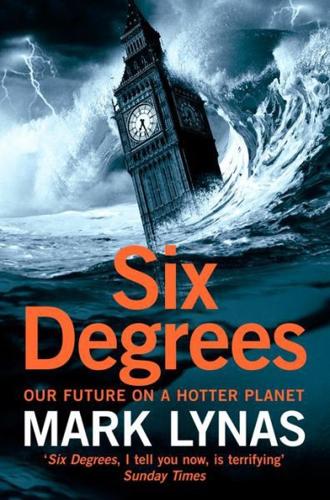
Six Degrees: Our Future on a Hotter Planet
by
Mark Lynas
Published 1 Apr 2008
Most people died, whilst the survivors went on to eke out a living in easily defended sites on the tops of steep cliffs. Several locations show evidence of violent conflict-including skulls with cut marks from scalping, skeletons with arrowheads inside the body cavity, and teeth marks from cannibalism. Indeed, the whole world saw a changing climate in medieval times. The era is commonly termed the ‘Medieval Warm Period’, a time when-so the oft-told story goes-the Vikings colonised Greenland and vineyards flourished in the north of England. Temperatures in the North American interior may have been 1 to 2°C warmer than today, but the idea of a significantly warmer world in the Middle Ages is actually false.
…
These innocuous-looking hills were once a desert, part of an immense system of sand dunes that spread across thousands of kilometres of the Great Plains, from Texas and Oklahoma in the south, right through Kansas, Colorado, Wyoming, North and South Dakota, to as far north as the Canadian prairie states of Saskatchewan and Manitoba. These sand dune systems are currently ‘stabilised’: covered by a protective layer of vegetation, so not even the strongest winds can shift them. But during the Medieval Warm Period, when temperatures in the Great Plains region may only have been slightly warmer than now, these deserts came alive-and began to march across a fertile landscape which today is a crucial food basket for humanity. This historical evidence indeed suggests that even tiny changes in temperature could tip this whole region back into a hyper-arid state.
…
K. 78 Journal of Climate 128 Jurassic Period 224-5, 226, 234 Kalahari Desert 102, 103-4, 105, 194 Kangerdlugssuaq Glacier, Greenland 69 Karakoram range 137-8, 139, 173 Karoo plain, South Africa 225, 228 Katz, Miriam 201, 206 Keipper, Dr Vince 13-14 Kennett, James 199-200 Kenya 13,151 Khama, Sir Seretse 102 Kidder, David 228-9 Kilimanjaro, Mount 13-18, 81 Kiribati 47 Knutson, Tom 128 Korea 186, 194 Krakatoa 201-2 Kruger National Park, South Africa 95 K2 137, 138, 139 Kyoto Protocol 246, 258 lakes: ancient 16, 22 glacial 80, 130 pollution 171 saline 4-5 landslides 31 submarine 201, 206-8, 211-12 Lawrence Berkeley National Laboratory 145 Lebensraum xxii, 210 Lesotho 90 Libya 19, 44 Lima, Peru 81, 83-5, 114, 195 localism 210, 247, 278 logging, illegal 120 Loire River, France 58 London 9, 12, 72, 148, 165 Lovelock, James 176, 197, 210, 214, 221, 240 Lowe, Jason 148 Luxembourg 61 Madagascar 194, 218 Madeira Islands 44 maize xv, 89 malaria 151-3 Maldives 47 Mali 90 Manabe, Syukuro 194, 196 Marshall Islands 47 Matterhorn 29-30, 58 Mayans 131-5, 174, 175 Mead, Lake 142 Medieval Warm Period 5-7 Mediterranean 44-5, 61-3, 150, 178, 179, 182 Mega-Chad, Lake 20 Meghna delta 211 Meltwater Pulse 1a flood 66 Meridional Overturning Circulation (MOC) 9-10, 11, 13 Meshian quarry, China 226-7 Meteorological Office (UK) xiv, 22-3, 59, 148 methane xix, 188-90, 201, 202, 225, 250, 252 methane-air clouds 232-4, 238 methane hydrate 200-6, 211, 223-4, 225, 231-4, 238, 250, 253, 270 Mexico 95, 131, 159 Gulf of 224, 237 migration: human 85, 124, 134-5, 141, 173, 175, 181-2, 199, 211 plants 93-4, 208-9 species 93-4, 154, 208-9 Mississippi River 224 Moche civilisation 82, 83, 113 modelling see computer modelling monsoon 20-1, 209, 227 acid 230-1 African 21, 52 Asian 21, 79, 135-7, 173, 209, 219 Australian 123 China 52-3, 193, 209 disruption 135-7 intensification 136-7, 173 North America 8, 203 Mont Blanc 30, 180 Monteverde Cloud Forest, Costa Rica 40, 92 Moon Lake 4-5 mountains 30-1, 85, 86, 179-81 deglaciation 137-42, 180 formation 218, 229 permafrost melt 30-1 refuges 211, 213 Mozambique 151 mudflows/mudslides 80, 115, 134, 180 Mumbai, India 72, 135-7, 165 Murray-Darling River basin, Australia 124 Namibia 104, 105, 237 NASA 27, 65, 70, 75, 166, 168 National Biodiversity Institute (South Africa) 39 National Center for Atmospheric Research (US) 26-7, 118 National Oceanic and Atmospheric Administration (US) 102-3 National Snow and Ice Data Center (US) 27 Native Americans 5-6 Nature 37, 45, 64, 67, 94, 115-16, 150, 156, 204 nature reserves 94, 235 Nebraska 6-7, 88, 246 Negev Desert, Israel 228 Nepal 80, 137 Netherlands 149, 150, 152 Nevado Huascarán 14, 82 New Orleans xiv, 42, 126, 128, 147, 165, 213 New York City xvii, 9, 145-7, 165 New Zealand 211, 222 Nigeria 18 Nile, River 17, 19, 195, 211 Nile Delta 163-5 nomads, climate 159 North Africa 16, 18, 20, 21, 61, 218 North America: ancient 197-8, 218, 219 desertification 194 drought 5-9, 173 extinctions 39-42 flooding 218, 219 Medieval Warm Period 5-7 see also Canada; USA North Sea 149, 207 Norway 10, 73, 131, 207 nuclear power 270, 271, 272 nuclear weapons 141, 212, 233, 272 nuclear winter xviii, 125, 233, 272 Nyos Lake, Cameroon 232 oceans acidification 53-6, 203 ancient 108, 110, 199-203, 219, 220, 223, 229-30, 233 anoxic 223-4, 227, 229, 236, 237, 267 carbon sequestering 175 circulations 9-13, 108, 109-10, 237 deep-sea extinction 199-200 freshwater surges 10-11 methane 190 oscillations 112 pollution 176, 224 salinity 229, stratification 224, 237 sulphurous 233 temperature and hurricanes 42, 43, 44-6, 229-30 warming process 222 warming spikes 223 see also sea levels Oechel, Walter 189 Office of Science and Technology (UK) 183 oil 73, 78, 171-2, 222, 223-6, 261, 267-70 Oklahoma 7 Oregon 85, 87 Oxford University xv, 104, 248 oxygen 231, 233 isotopes 15, 227 ozone layer 233, 238 Pacala, Steve 270-1, 271-2 Pachauri, Rajendra 77-8 Pacific Islands 46, 194 Pacific Ocean 10, 46, 54, 114, 115 Pakistan xxii, 80, 137, 139-42, 209 Palaeocene 199, 200, 202, 203-4, 225 Palaeocene-Eocene Thermal Maximum (PETM) 203-4, 205, 208-9, 223, 236, 249 palaeoclimate 52, 107, 166, 249, 251 Papua New Guinea 113 Paris 57, 58 Parizek, Byron 68 Patagonia 194, 211 peat 202, 221 Penn State University 68 permafrost xvii, 24, 25, 58, 76, 187, 188, 252 Alpine 30-1 methane release 187-8, 252, 253 Permian-Triassic boundary 225-34, 235, 237, 238, 239, 252 Peru 14-15, 80-5, 112-13, 114, 224 Pezza, Alexandre 43 pikas 39-40, 42, 91 Pinatubo, Mount 125 plankton 54-6, 75, 175, 222, 224, 267 plants 180-1 ancient 218, 219, 220 Cape Floristic Region 39 carbon emissions 60 extinction 39, 76, 77, 91, 93-4, 155, 228 migration 93-4, 208-9 tepui 153, 154 Wet Tropics 32 Pliocene 105-12, 114, 246, 249 Po River, Italy 58 polar bears 27, 72-4, 75, 156 polar regions 108-10 ancient 220, 229 belt of habitability 209 deserts 67 ice-sheet collapse 64-72, 129, 130, 131, 146 politics 159, 210, 247, 254, 271 pollution 171, 176, 178-9, 224, 249 Pontresina, Switzerland 30 population: growth 5, 92, 152, 171, 214, 247 movements 93-4, 124, 173, 175, 181-2, 211 prehistoric crash xviii reduction in 5, 214 Portugal 44, 58, 61, 177, 178, 186 positive feedbacks see feedbacks Powell, Lake 143 Proceedings of the National Academy of Sciences 87 protea flowers 39, 42, 91 Pueblo Indians 5 Queensland, University of 35 Queensland Wet Tropics rainforest 31-4, 91, 95 Quelccaya ice cap 81 rainfall 17, 101-3 acid rain 171, 228, 230, 249 Africa 21-2, 101-3 ancient 203, 220 Australia 123-4 Central and South America 119, 133-5, 209 convective rainfall 185 Europe xiii, 62, 149, 150, 185 flash floods 23 hurricane xiv, 126 increased 21, 185-6, 194 North America 129, 185 reduced 8, 62 seasonality 62 soil erosion 184-5, 203 UK xiii-ix, 185, 211 see also monsoon rainforest: Amazon 115-21, 153, 175 ancient 203, 220 fires 193 habitat loss 31-4 Queensland Wet Tropics 31-4 Rapley, Chris 167 refugees xiv, 79, 85, 126, 159, 197, 211 conflicts over 141, 159, 197 from coastal areas 165-6 from Mediterranean 180 refuges 179, 181-2, 210-11 reservoirs 85-6, 87, 124, 133, 140 Revenge of Gaia, The (Lovelock) 176 Rhine River, Germany 58, 94, 150, 181 Richardson, Katherine 56 Rimac River, Peru 81, 84, 195 Rio Santa, Peru 81-2 rivers: flows 58, 193-4, 195, 196 Indus 137-42 USA 142-5 rockfalls 29-30, 31, 58 Rocky Mountains 86, 87, 144, 145, 155, 181, 203 Royal Society 54 Rumsfeld, Donald 247 Russia 73, 89, 174, 177, 178, 196, 197, 221 Rwenzori Mountains, Uganda 16-17 Ryskin, Gregory 232-3 Safsaf Oasis, Egypt 19 Sahara 61, 120, 180, 195, 224 expansion of 151, 186, 194 greening 21-2, 23 wet and dry cycles 18-21 Sahel 16, 18-23, 194 salinity 5, 11, 124, 229 Salt Lake City, Utah 86 San Joaquin River 86, 142 sand dunes 7-8, 18, 19, 82, 121 remobilisation 104 stabilised dunefields 103-4 Sand Hills, Nebraska 7 sandstorms 8 Sardinia 62 Saskatchewan, Canada 7 Saudi Arabia 195, 268 Saunders, Victor 29 Scambos, Ted 27 Schrag, Daniel 204 Science 12, 69, 144, 201 Scientific American 65 Scotland 28, 105-6, 182, 184, 207 sea ice xx, 10 melt 12, 26, 27, 28, 74-5, 129, 186-7 sea levels: ancient 63-5, 109, 218, 229, 246 rising 46-7, 65-72, 131, 146-7, 163-70, 193, 211, 252 seals 27, 75, 77 SEDAPAL 83-4 Seward Peninsula, Alaska 25 Shanghai, China 112, 128, 165 Shea, Dennis 46 Sheehy, John 157 Shelley, Percy Bysshe 174-5, 177 shellfish 54 Shetlands 207 Shishmaref, Alaska 77 Siachen Glacier 138 Siberia xxii, 11, 13, 25, 155, 188-9, 193, 196, 197, 220, 230, 246 ancient 219, 220 drought 173 newly habitable areas 196 permafrost melt 187, 252 rivers 11, 193 volcanoes 230 Sierra Nevada, California 3, 86, 87, 145 Simmonds, Ian 43 Smith, Larry 188-9 smog and smoke 121, 122, 125 snow 67, 86, 119, 178, 181, 183-4, 187 Alps 180, 181 Arctic 187 disappearance of 194 Europe 178 snowmelt feedback 27 snowpack 85-6, 87, 88, 143, 195 UK 183 society 263, 266 collapse of 141, 159, 174 localism 210, 247, 278 Socolow, Robert 270-1, 271-2 soil 175-6, 197 carbon release 117, 188, 250, 251 desiccation 18, 150, 187, 194, 195 erosion 170, 184-5, 202, 203, 214, 227-8 thaw and methane release 188-9 solar power 270, 273, 276 solar radiation 75, 240 Somalia 18 South Africa 39, 91, 95, 104, 173, 225, 269 South America 10 agriculture 89, 173 ancient 218, 220 desertification 194, 209 Southern Nevada Water Authority 86 Spain 44, 62-3, 177, 178, 186, 202 spring, early 92 Stanley, Mount 17 Stern, Sir Nicholas 253 St Helens, Mount 201-2 Storegga Slide 207 storm surges xiii, 146, 148-9, 165, 182 storms 28, 113, 124, 177: Europe 148-51 intensity index 45 tempestites 219 UK xiii-xiv, 181-4 see also hurricanes Stott, Lowell 199-200 subtropics 134, 158, 209, 220 Sudan 19 sulphate aerosols 107, 135-6, 249 summer, lengthening 62 survivalism 212-14 Swaziland 90 Sweden 131, 177 Switzerland 30, 177, 181, 264 Sydney, Australia 122, 185-6 synfuels 269 Tanzania xv, 13, 18, 151 Tasmania 123, 124, 173, 211 temperature: ancient 64, 218-19, 249-50 rising xx-xxi, 28, 120, 193, 227 sea 126, 229-30 speed of rise 93 see also heat; heatwaves tempestites 219 tepuis 153-4 Texas 88, 125-8, 184-6 Thailand 263 Thames, River xiii, 12, 148 thermal inertia xxi-xxii, 111 Thomas, Chris 94-5, 156 Thomas, David 104, 105 Thomas, Dylan 240-1 Thomas, Jeremy 93 Thompson, Lonnie 14-15, 80-1 Tibet 14, 137, 141 Tierra del Fuego, Chile 211 Tikal, Mexico 131-2, 133 Titanic 113 tornadoes 125 tourism 18, 61, 62, 164, 263 trade winds 114, 151, 193 tragedy of the commons 264 Transantarctic Mountains 108-9, 169, 228 transport 171-2, 271-2, 275-6, 277-9 trees 93-4 leaf stomata 110-11 stumps 3-4, 203, 218-19 treeline 109, 144 Trenberth, Kevin 46 tropical storms see hurricanes tropics 159, 193, 208 agriculture 157-8 covergence zone 151, 193 Truffer, Martin 69 Trujillo, Peru 82-3 tsunamis 206-8, 212 Tuleya, Bob 128 tundra xvii, 10, 109, 174 shrub encroachment 24, 75, 76, 187 Turkey 62, 177 Tuvalu 46-7 Uganda 16-17 Ukraine 177 UNESCO World Heritage Sites 32, 34, 39 uninhabitable zones 195, 197, 209 United Kingdom 108, 181-4 agriculture 89, 210-11 cooling 12, 211 drought 177-8, 182 emissions targets 257 flooding xiii-xiv, 148-51, 182-4, 193 fuel protests 259-60 heatwaves 57, 177-8 land loss 170 as refuge 179, 181-2, 210-11 storms xiii-xiv tsunami 207 weather patterns 27-8, 93, 210-11 United Nations (UN): Climate Change Conferences 14, 76-7 Kyoto Protocol 246, 258 Millennium Ecosystem Assessment 92 United States 77, 195, 220 agriculture 5-9, 88-9, 89, 90, 143-4, 158-9 Colorado River 6, 86, 142-5, 167 conflict 197 desertification 194 drought 3-9, 60, 87, 129, 143, 144-5 emissions 257, 258, 260, 264, 274 extinctions 39-40 flooding xiv, 115, 145-7, 158, 165-6 fossil fuels 73, 221 hurricanes xiv, 38, 42, 46, 125, 166 north-eastern 113 north-western 129 refugees 159 refuges 159 soil erosion 184-5, 186 southern 6, 8 water crisis 85-8, 195 western 8, 60, 143-5 wildfires 4, 87-8 see also North America USDA Forest Service 145 vacuum bombs 232 Vatnajökull, Iceland 130-1 Venezuela 121, 153 Venice 165 Vezina, Jennifer 63 Virgil xviii, 217 volcanoes xvii-xviii, 14, 130, 201-2, 220, 227, 232 Wales 28 Walker River 3 walruses 75 war see conflict warming spikes 223 Washington State 85, 87 water xiv, 80-2 conflict over xxii, 85, 86, 140 ‘fossil’ supplies 140 and glacial retreat 17 and montane forest 17 rationing 124 saline penetration 124, 166 shortages 53, 58, 63, 81-8, 123-4, 129, 137-42, 196 water tables 196 water transfer project 53 waterholes 17 Watt-Cloutier, Sheila 77 Weddell Sea 199 wedge approach 270-9 Weeks, Scarla 238 wells 133, 195 West, Robert 197, 198 wetlands 86, 102 Wet Tropics rainforest 33-4, 91, 95 wheat 78, 89, 124, 157 When Life Nearly Died (Benton) 230-1 wildfires see bushfires, forest fires wildlife 91-7, 213 Amazonia 120 ancient distribution 197-9 Arctic 25 33, 72-7, 187 coral reefs 34-5 habit loss 32-3 marine 209-10 tepuis 153-4 Wet Tropics 32-3 see also extinction Williams, Dr Steve 33 Williams, John 155 Wilson, Edward O. 95, 96 wind 104-5, 123, 150, 182 trade wind 114, 151, 193 wind turbines 270, 271-2, 277 winter 6, 12, 181, 196 World Wildlife Fund 39 Worsley, Thomas 228-9 Xiaoping, Deng 171 Yakima Valley, USA 143-4 Yangtze River 53, 112, 138, 167, 193, 2 Yellow River, China 171, 193 Yellowstone National Park 5 Yemen 195 Yosemite National Park 4 Younger Dryas 10 Zachos, Jim 204 Zambia 104, 105 Zimbabwe 90, 104, 105, 151 ACKNOWLEDGEMENTS This book is above all a work of synthesis, bringing together research conducted by many hundreds of scientists around the world.

Cold: Adventures in the World's Frozen Places
by
Bill Streever
Published 21 Jul 2009
The Draisine would eventually evolve into the bicycle. The Year Without Summer was a harsh year during a harsh set of centuries. Centuries earlier, ending sometime around the fourteenth century, Europe had enjoyed temperate weather. England and France came of age during what has since been called the Medieval Warm Period, stretching from about 800 to around 1300. Vineyards thrived in a warmer England. Although most people depended on subsistence farming methods comparable to those used in the worst of today’s developing world, populations grew. With good weather, subsistence farming provided basic necessities as well as a surplus, and the surplus supported cathedral building, monks, and the development of trade.
…
This was all part of what has come to be called the Little Ice Age. François Matthes, a glacial geologist, first used the phrase “little ice age” in 1939: “We are living in an epoch of renewed but moderate glaciation — a ‘little ice age’ that already has lasted about 4,000 years.” Later, the Medieval Warm Period was recognized, separating a cold snap that had started around 2000 b.c. from the cold snap that started sometime around the fourteenth century. But it is not right to think of these periods as cold snaps. They were, on average, colder than earlier times, but only by a couple of degrees. Summers could be quite hot, but winters were colder and longer than at other times, bringing the average down.
…
Seedlings might take hold for a year or two in a patch on the south-facing slope of a hill or along a river, then die back when a brutally cold, dry gale howls in from the north, blowing them over or sucking away the moisture that keeps them alive or sand-blasting them with crystals of wind-borne ice. Or the boundary might move way north, as it would have during the Medieval Warm Period, and then south, as it would have during the Little Ice Age. Stragglers, unable to reproduce in current conditions, their flowers not maturing or their pollinators no longer present, might hang on long after the climate has changed, little islands of out-of-place spruce or pine or oak trees.
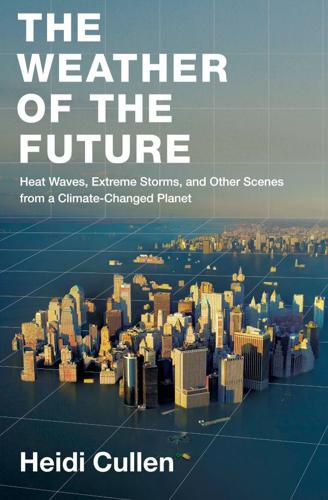
The Weather of the Future
by
Heidi Cullen
Published 2 Aug 2010
This is why Gearheard and others are so interested to see how the Inuit, an ancient people who have built their lives around ice and snow, are responding to climate change. Shifts in climate are not unfamiliar to the Inuit. It was during the Medieval Warm Period, from about a.d. 800 to 1300, that the Thule pushed east into northwestern Greenland from Canada. They were probably following the bowhead whale as the sea ice that had permanently closed off the channels between the northern Canadian islands during colder times finally began to melt in the summer. After the Medieval Warm Period came the Little Ice Age, and by the 1400s this brief return to colder conditions was well established. The Little Ice Age proved to be of little significance to the Inuit.
…
The right name may be all it takes to sell people on a dream of a better life and a brighter future. On the other hand, although Erik the Red seems to have been a murderer, he wasn’t necessarily a liar. You might say that in naming Greenland, he told a white lie. At the time, Greenland was actually much greener than it is today. From about a.d. 800 to 1300, the Medieval Warm Period, Greenland’s climate was much milder, and the southern part of Greenland, where Erik the Red settled, did indeed have meadows lush with grass, willows, and wild berries. In any case, Erik the Red must have been a good pitchman, because in 985 he led a fleet of twenty-five Viking longships to settle two new colonies on Greenland.
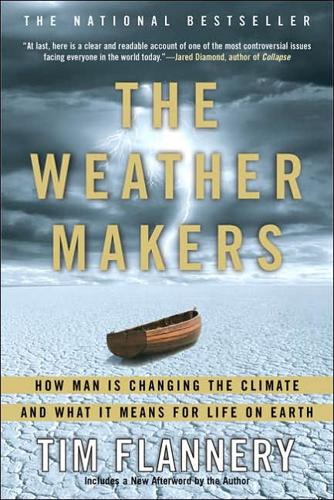
The Weather Makers: How Man Is Changing the Climate and What It Means for Life on Earth
by
Tim Flannery
Published 10 Jan 2001
This is because solar radiation warms the upper levels of the stratosphere through the ultraviolet rays that are absorbed by ozone.11 Greenhouse gases, in contrast, warm the troposphere, and they warm it most at the bottom where their concentration is greatest. At the moment Earth is experiencing both stratospheric cooling (due to the ozone hole) and tropospheric warming (due to increased greenhouse gases). This discovery has led to a re-evaluation of some climate shifts, of which the so-called Medieval Warm Period is most famous. Ever since H. H. Lamb first wrote of that warmer England of Chaucer, which could grow its own grapes and make its own wine, the idea that the medieval Earth was 1&nd;2°C warmer than today has hardly been questioned.12 It has in fact become something of a cause célèbre of climate change sceptics, for they have used it to argue that the medieval warming could have had nothing to do with the burning of fossil fuels, thereby casting doubt on the link between greenhouse gases and increased temperature.
…
Leaving this wonky logic aside, the apparent discrepancy was resolved when it was realised that stratospheric cooling influences circulation in the troposphere, thereby heating and cooling parts of the Earth in a complex, patchy manner. A survey of global temperature records (from ice-cores, tree-rings and lake deposits) shows that, if anything, Earth was then overall slightly cooler (0.03°C) than in the early and mid-twentieth centuries, proving that the idea of a global Medieval Warm Period is bunk.13 Greenhouse gases, orbital variations and sunspots can all be thought of as ‘forcing’ changes to the temperature of our planet. As scientists began to contemplate the influence of these forces, and to look to the geological record to confirm how they worked in the past, they discovered that the fossil record is characterised by sudden shifts from one steady, long-lasting climatic state to another.
…
(Lord Cherwell), 214 Long, Stephen, 207 Lopez, Barry, 98-99 Lott, Trent, 230 Lovelock, James, 13-14, 17, 216-17, 246-47, 272-73 Lutgens, Frederick, 136 Maiana atoll (Kiribati), 84 malaria, 138, 177, 288 Maldives, 287 mammals caribou (reindeer), 100 Dendrolagus lumholtzi (Lumholtz’s tree-kangaroo), 175 Dicrostonyx hudsonius (collared lemming), 98-100 elephants, 17 fox, arctic, 102 lemuroids, 174 Mallomys gunung (alpine woolly rat), 173 marsupials, 174-75 Pagophilus groenlandicus (harp seal), 101 polar bears, 100-101, 102-3 possums, 92, 93-94, 127, 174-75 seals, 96, 98, 101 Tarsipes rostratus (honey-possum), 127 walrus, 101 whales, 96, 98 Manabe, Syukoro, 154 Mann, Michael, 314 Man’s Place in the Universe (Wallace), 37 Marshall, Andrew, 190 Marshall Islands, 287 Mastrandrea, Michael, 169 Maunder Minimum (1645-1715), 43 Medieval Warm Period, 44 MEGABARE, 226-27 Meganesia, 92-94 Mercer, John, 148-49 Mesopotamia, 66-67 mesosphere, 20 methane, 30, 52, 65, 71, 293 in natural gas, 77, 260 from sea floor, 199-201 Mexico, 181, 230 Mexico, Gulf of, 309, 311, 313 Meyer, Aubrey, 208, 299, 300 Middle East, 76, 246 migration, 51, 88, 89, 99, 112, 178-83 Milankovich, Milutin, 41-42 Milankovich cycles, 41-42, 50, 55, 65, 66-67, 68 MiniCAT, 281 mining, 69-70, 73-74, 253 Mississippi River (United States), 34, 313 Molina, Mario, 214-15, 217 molluscs, 186 Monaco, 7, 223 Monte Bolca (Italy), 111-12 Monteverde Cloud Forest Preserve (Costa Rica), 114-19 Montreal Protocol (1987), 213-14, 218, 220, 230 Morgan, Hugh, 244 Moteur Développement International, 281 mountains, 172-77 Munich Re, 236 Murdoch, William, 74 Myrmidon Reef (Australia), 107-8 National Center for Atmospheric Research, 125 National Climatic Data Center, 235 national parks, 143-44, 181, 182 natural gas, 70, 76-77, 259-60 The Natural History of Selborne (White), 87 The Nature Conservancy, 183 Neidjie, Bill, 69-70 Netherlands, 226 Newcomen, Thomas, 74 New Guinea, 1-2, 65, 92-94, 172-73 newts, 90 El Niño, 84, 85-87, 108-9, 197, 235 in Pacific, 92, 106-7 nitrogen, 21, 293 nitrous oxide, 30-31, 282 Nong River Valley (Papua New Guinea), 93-94 Nordhaus, William, 234 Nortel, 220 North America, 32-33, 46, 139, 143, 181.
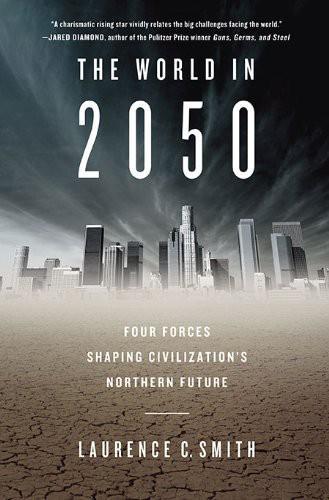
The World in 2050: Four Forces Shaping Civilization's Northern Future
by
Laurence C. Smith
Published 22 Sep 2010
MacDonald et al., “Southern California and the Perfect Drought: Simultaneous Prolonged Drought in Southern California and the Sacramento and Colorado River Systems,” Quaternary International 188 (2008): 11-23. 247 The medieval warming was triggered by increased solar output combined with low levels of volcanic sulfur dioxide in the stratosphere, whereas today the driver is greenhouse gas forcing. The comparison between the medieval warm period and today is imperfect because the former saw temperatures rise most in summer, whereas greenhouse gas forcing causes maximum warming in winter and spring. Still, the medieval warm period is the best “real world” climate analog scientists have for examining possible biophysical responses to projected greenhouse warming. For more, see G. M. MacDonald et al., “Climate Warming and Twenty-first Century Drought in Southwestern North America,” EOS, Transactions, AGU 89 no. 2 (2008).
…
California: and the Louisiana Purchase; and renewable energy; and sea levels; and water resources Cambodia Canada: and aboriginal peoples; and the Arctic Council; and Arctic resources; and Arctic shipping; and climate distribution; and crop yields; and demographic trends; and education; and endangered species; and foreign relations; and global warming; and human settlement patterns; and immigration policy; and the Kyoto Protocol; and the “New North,” and North Pole expeditions; and oil sands; and power transmission systems; and the Siberian Curse; and UNCLOS; and water resources; and wind power; and winter roads; and World War II, canals Canterell field Cape Cod, Massachusetts carbon emissions: and biofuels; and carbon capture technology; and climate change; fertilization effect; and hydrogen fuel cells; and the Kyoto Protocol; and melting permafrost; monitoring levels of; natural cycles of; and oil resources; persistence in atmosphere; and renewable energy resources Carnegie Endowment for International Peace Carson, Rachel Carter, Jimmy Caspian Sea cellulosic ethanol Central Asia Central Valley Chad Chávez, Hugo Chernobyl power plant Chicago Diversion Chile Chilingarov, Artur China: and aging populations; and Arctic resources; and coal resources; and economic growth models; and global warming; and human settlement patterns; and melting permafrost; and natural gas resources; and nuclear power; and population control policies; and power transmission systems; and the Russian Far East; and Russian immigration policy; and shifting economic power; Singapore as model for; unification of; and urbanization; and water resources; and wind power The Christian Science Monitor Chu, Steven Churchill, Manitoba Churchill, Winston civil rights movement “clean coal,” climate change: and aboriginal peoples; and abrupt-change scenarios; and agriculture; and the Arctic; and climate models; and coal; connection to other global forces; and demographic trends; described; and drought; and electric vehicles; and endangered species; and geophysical impacts; and inertia of global forces; and medieval warming period; and melting ice sheets; and melting permafrost and migration of species; monitoring climate; and national security; and nuclear power; and ocean temperatures; and prospects for NORCs; and risk management; and river runoff; and sea ice; and sea levels; and short-term fluctuations; and snowpack and glaciers; SRES scenarios; and water resources; and winter roads Clinton, Bill Clinton, Hillary Rodham coal Cohen, Joel E.

The Rational Optimist: How Prosperity Evolves
by
Matt Ridley
Published 17 May 2010
The famous ‘hockey stick’ graph that seemed to prove that the Medieval Warm Period never happened has since been comprehensively discredited. It relied far too heavily on two sets of samples from bristlecone pine trees and Siberian larch trees that have since been shown to be highly unreliable; it spliced together proxies and real thermometer data in a selective way, obscuring the fact that the proxies did not mirror modern temperatures, and it used statistical techniques that made a hockey stick out of red noise. Subsequent nontree-ring proxies have emphatically reinstated the Medieval Warm Period as warmer than today. See http://www.climateaudit.org/?
…
As for fresh water, the evidence suggests, remarkably, that, other things being equal, warming will itself reduce the total population at risk from water shortage. Say again? Yes, reduce. On average rainfall will increase in a warmer world because of greater evaporation from the oceans, as it did in previous warm episodes such as the Holocene (when the Arctic ocean may have been almost ice-free in summer), the Egyptian, Roman and medieval warm periods. The great droughts that changed history in western Asia happened, as theory predicts, in times of cooling: 8,200 years ago and 4,200 years ago especially. If you take the IPCC’s assumptions and count the people living in zones that will have more water versus zones that will have less water, it is clear that the net population at risk of water shortage by 2100 falls under all their scenarios.
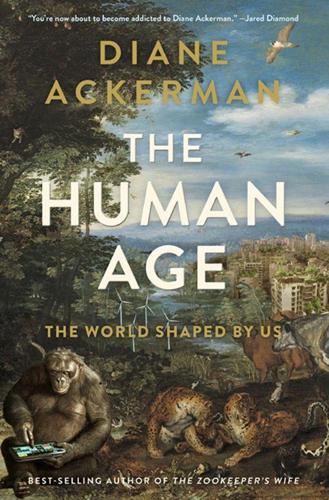
The Human Age: The World Shaped by Us
by
Diane Ackerman
Published 9 Sep 2014
In Greenland, local farmers, seeing fertile soil for the first time, began avidly planting. Milder winters require less heating, which saves on energy, and travel and homesteading in the north is much easier in a warmer world. Not that long ago in the grand scheme of things, we had a famously balmy spell. During the Medieval Warm Period, from 950 to 1250, the Vikings found the lack of sea ice so good for travel that they established a colony in present-day Newfoundland. A warmer world won’t be terrible for everyone, and it’s bound to inspire new technologies and good surprises, not just tragedy. Change is the byword everywhere, and if there’s one unchanging fact about humans it’s that we loathe change in nature, perhaps because we feel we can’t control it.
…
Moreau, The (Wells), 267–68 Israel, 76 Istanbul, Turkey, 78 Italy, 88, 107 Ithaa Restaurant, 76 Ivanpah, 106 Ivins, Molly, 206 Jaguar Corridor, 123 Jamaica Bay, 119 Jamaican fruit bats, 131 Japan, 88 industrial tourism in, 23 Japan beetles, 295 Japanese honeysuckle, 132 Jarrell, Randall, 45 jellyfish, 65, 181 Jernhusen, 96–97, 98 Jerusalem, 77 Jet Propulsion Laboratory, 220 Jim River, Alaska, 40 Johansson, Klas, 96–97 Johns Hopkins University, 244 Jordan, Terry, 31–32 Jungle Waterfalls, 83 Kahn, Peter H., 196 Kalmar, Sweden, 99–100 kangaroo, 296 Kanzi (bonobo), 202 Katrina, Hurricane, 46 katydids, 173–74 Kawasaki, Japan, 23 Keating, Tim, 147 kelp, 56, 57, 58, 60, 63–64 biofuels from, 64 Kenya, 124 Khoshnevis, Behrokh, 235 Kidd, Captain, 58 kidney, 239 King, Ross, 221 Kiribati, 49 knapweed, 166 knife fish, 147–48 Knights of the Order of the Barrier, 51 koalas, 164 Kockums, 101 Kojo Moe (Ohyama), 23 Korup National Park, 126 krill, 134 Kublai Khan, 272 Kubrick, Stanley, 269 kudzu vine, 132 Kungsbrohuset office building, 96 Kurzweil, Ray, 181, 218 Lactobacillus johnsonii, 301 Lafferty, Kevin, 299 Lake Cayuga, 30–31 Lamarck, Jean-Baptiste, 276–77 Lammens, Kathy, 302 lampreys, 132 Lancet, 277, 278 landscapes, 22–23 manufactured, 23–25 language, 7, 10, 171, 191, 255, 303 of animals, 201–3 Language Research Center, 201–2 Larry (boa), 130 lead, 271 Leadership in Energy and Environmental Design (LEED), 88 Leaves of Grass (Whitman), 184 Lederberg, Joshua, 289 LED lights, 90, 103–4 Leeuwenhoek, Antonie van, 290 Leno, Jay, 235 leopards, 118 leucine, 179 Library of Congress, 59 lifespan, 13 lights, 17 Lincoln Memorial, 59 Lindholm, Bosse, 100 Linnaeus, Carl, 217 lions, 164, 273 Lipson, Hod, 208–25, 226–27, 229, 235, 247, 250 livers, 150, 248 Living Machines Conference, 218–19 local farms, 88 Lockheed Martin, 236 locusts, 41 London, 50–51 London Zoo, 159 Long Island Sound, 60 loosestrife, 132 Losiny Ostrov National Park, 78 lotusin, 91 Louisiana, 46 Louv, Richard, 196 lungs, 239, 248 Lyme disease, 121 Lyme ticks, 39 lynxes, 132 macaws, 164 Maeslantkering, 50 magnolias, 111–12 magpies, 217 Mail Online, 271 malaria, 302 Malaysia, 79 Maldives, 76–77 mallards, 117 Mall of America, 96 Mandarin Chinese, 281 mantis shrimp, 61 manufactured landscapes, 23–25 manufacturing, 12 mariculture, 56–67 pushback against, 64–65 marigolds, 90 marine transport pollution, 76 Marshall Islands, 314 marsh rabbits, 129 Marsico, Ron, 119 Masdar City, Abu Dhabi, 103–4 Masters, Jeff, 47 mastodons, 31 Mayflower, 132 McDonough, William, 87–88 McGill University, 282, 284 McKibben, Bill, 112 McMurdo Station, 88–90 Meaney, Michael, 282–84 Mecanoo, 104 medical ecology, 300 medicine, 7, 12–13 Medieval Warm Period, 43 Mehler, Mark, 282 memories, 255 Men Who Stare at Goats, The (Ronson), 146 Mercedes, 236 mercury, 271 Mesopotamia, 235 metal alloy teeth, 253 methylation, 281 Mexico, 88 Mexico City, 77, 82–83 mice, 302 Michigan, 132 microbes, 287–304 effects of, on humans, 292, 295–303 evolution affected by, 292–93 microbiome, 289 microscope, 290 microtia, 244–45 Milky Way, 176 Milton, John, 51, 212–13 mining, 11, 21, 24, 34 mitochondria, 291 Mitsuku, 317 Mohali, India, 99 moist shaded zones, 79 Mojave Desert, 22, 106 Mongolia, 132 monkeys, 146, 267 monk parakeets, 131 monkshoods, 125 monsoon season, 51, 53 Montaigne, Michel de, 63 Montana, 117 Mooallem, Jon, 139–40 moon, 306 Moorea, 158 moor frogs, 124 moose, 132 Moscow, 78 MOSE Project, 50 mosquitoes, 302 Motherwell, Robert, 218 Motley Fool, 235 multiple sclerosis, 301 Mumbai, 78 musk oxen, 132 mussels, 58, 60, 66, 78 mussel tissue, 91 Muybridge, Eadweard, 191 Nakamura, Makoto, 238 Naki’o, 256 Namibia, 180–81 nanobots, 181 Nano Impacts Intellectual Community, 183 nanoparticles, 182–83 nanotechnology, 179–87 nanotubes, 179 NASA, 204, 235, 305, 314 Nasheed, Mohamed, 76 National Academy of Science, 266–67 National Arbor Day Foundation, 38 National Institutes of Health (NIH), 285 national parks, 165 National Resources Defense Council, 316 National Zoo, 123 NATO, 237 Natural History of the Senses, A (Ackerman), 175 nature: balance of, 132–33 romance with, 126–27 as term, 25, 111–27, 171–72, 309–10 Nature, 134 nature deficit disorder, 196–97 Nature Neuroscience, 282 Navigenics, 271 Navy, U.S., 145, 147 Nazis, 273–74 Neanderthals, 162, 178, 189, 263 nearsightedness, 192 Nelson Island, 48 Nemo, Blizzard, 58 Nestlé, 212 Netherlands, 101, 124, 132 Netherlands Antilles, 88 neural implants, 253 Nevada, 106 New Forest, 174–75 Newfoundland, 42 New Jersey, 46 New Mexico, 40 Newton, Isaac, 220 New York, 38, 46, 77 New York, N.Y., 55, 73 New York University, 197–98 night fiddlers, 172–73 Nile perch, 131 Nin, Anaïs, 186 nitrogen, 36 NOAA, 210 Norrbotten, Sweden, 275–76, 277–78, 280 North Africa, 106 North Carolina, 46 northern goshawks, 132 Northwest Passage, 135 Norway, 101, 124, 132 Norway maples, 132 nuclear bomb, 191 nuclear power, 22, 100 nuclear winter, 8, 9 Obama, Barack, 177 Obama administration, 233 obesity, 196 ocean, acidification of, 65, 66, 154 octopuses, 202, 216 Ohio, 77 Ohyama, Ken, 23 oil, 99, 106 oil refineries, 22 oil spills, 300 Oman, 132 1D farming, see mariculture Operation Acoustic Kitty, 146 Operation Migration, 139–40 opossums, 129 Orangutan Awareness program, 28 Orangutan Outreach, 5, 6, 313 orangutans, 3–7, 25–28, 132, 216, 217, 231, 296 human genes shared by, 3 impending extinction of, 27–28, 313 solitary lives of, 4 tool use by, 5 orca whales, 135, 144 orchids, 206 Orff, Kate, 55 organic fertilizer, 64 Organovo, 238–39 Ornstein, Len, 54 Orthopets, 256 Oshkosh Airshow, 187 osteoarthritis, 248 otters, 124 Outer Island, 58 ovarian cancer, 281–82 Överkalix, Sweden, 279–80 oxen, 140 oxeye daisies, 132 oxygen, 41, 53 oysters, 54–55, 56, 57, 60, 61–63 Ozawa, Masakatsu, 23 P-52 (python), 128 pacemakers, 253 Panbanisha (bonobo), 201–2, 203 pancreas, 281 pansies, 90 Papua New Guinea, 72 Paradise Lost (Milton), 212–13 Paris, 95–96 Paris Habitat, 96 Parkinson’s disease, 253, 295 parks, 73–74, 78 parrots, 202 parsley, 89 Partula, 156–59 passenger pigeons, 151–52 Pasteur, Louis, 290 Patagonia National Park, 99 pathogens, 290 peacock feathers, 91 Pearce, Mick, 93–94 Pembrey, Marcus, 279, 281 penguins, 134–35 peonies, 125 People’s Daily, 146 peppers, 89 peregrine falcons, 132 periwinkles, 61–62 permafrost, 48 personality, 200, 214, 216–17, 222–23, 229, 253, 292, 297, 299, 303–4, 307 Peru, 77 pesticides, 153, 166 pets, 149–50 Pettit, Don, 16 Phelps, Michael, 258 phenotypic elasticity, 249–50 Philippines, 46 photonic clusters, 35 phytoplankton, 61 piezoelectricity, 317 pigeons, 140, 142, 144, 145–46 pigs, 71 in war, 146 Pistorius, Oscar, 258, 260 Plan Bee, 166 planes, 171, 191 planets, 220–21 Planets, The: A Cosmic Pastoral (Ackerman), 220 plankton, 134–35 PlantLab, 90 plants: in cities, 79–85 texting by, 205–7 plastic stents, 253 Pleistocene Park, 151 Pliocene, 29 PLOS ONE, 271 pneumonia, 183 Poland, 78, 132, 273 polar bears, 134 polar molecules, 35 polar T3, 90 pollution, 154 marine transport, 76 Polo, Marco, 272 polymer teeth, 253 Polynesia, 156, 157 Ponce, Brent, 260–61 ponies, 137–38 Pons, Lily, 264 poppies, 125 population growth, 10 Porter, Eliot, 25 poverty, 285, 286 Power Felt, 185 prairie dogs, 131 presence, 199 Price of Freedom: Americans at War exhibit, 145 probiotics, 300 Proceedings of the National Academy of Sciences, 129 produce, 89 Project Orcon, 145 Project Pigeon, 145 Project X-Ray, 145 proprioception, 175–76 prosthetics, 256–58 protein, 190 protozoans, 172, 289–90, 300 Przewalski’s horses, 132 Puerto Rico, 175 Puppe (orangutan), 26–27 purple finch, 137 pyrolysis technology, 76 pythons, 128–31, 133, 140, 315 Quai Branly Museum, 80–82, 84–85 quarries, 24 quasi-crystal, 34 rabbits, 126, 129, 133 rabies, 298 racoons, 129 rail trails, 77 rainforests, 79 rains, 41 Raison, Charles, 300–301 Rambuteau subway station, 95–96 Rand, Ayn, 59 rats, 282–83, 296 reading, 191–92 Reconciliation Ecology, 74 recycling, 52, 74, 78, 87, 88, 90 heat, 95–108 red clover, 166 Red Delicious, 137 red foxes, 153 red kites, 132 Red Sea Star Restaurant, 76 reef death, 36–37 refrigerators, 87 regenerative medicine, 244 Rehabilitation Institute of Chicago, 254–55 reindeer, 132 Reiss, Diana, 202, 204 religion, 176 Relman, David, 300 Renaissance, 190 Renault, 83 renewable energy, 307 restaurant rooftop farms, 88 retinas, 253 Revolutionizing Prosthetics program, 258–59 Rezwan, Mohammed, 52–53 rhododendrons, 125 rice, 71 Rice Plant Conservation Science Center, 82 Rig Veda, 257 RinkWatch.org, 40, 314 Rio de Janeiro, Brazil, 78 Ripasso Energy, 100–101, 106 roadkill, 115–16 robomoths, 146–47 RobotCub Consortium, 218–19 robot fleas, 148 robotic evolution, 210, 213, 224–25 robots, 210–25 rocketships, 171 rock strata, 31, 35 roe deer, 124 Romania, 78, 124 Romans, 185 Rome, 267 Roosevelt, Franklin D., 145 rosemary, 90 Rosenzweig, Michael, 74 roses, 125 Rotterdam, Netherlands, 77 Royal Botanic Gardens, 118 Rwanda, 46 Ryu Chan Hyeon, 102 saber-tooth tigers, 162, 163 Sagan, Carl, 220 sage, 125 Sahara Desert, 54 Sahel, 46 St.
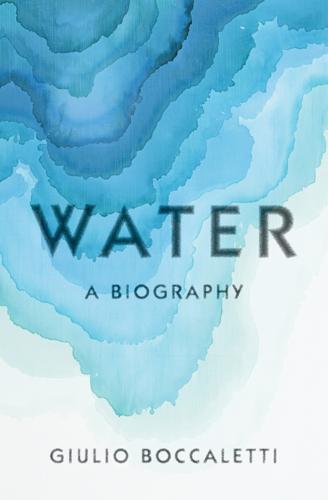
Water: A Biography
by
Giulio Boccaletti
Published 13 Sep 2021
Gregory, the bishop of Tours, described: Gregory of Tours, The History of the Franks, 295. Open fields became rare: Verhulst, The Carolingian Economy, 11. Climate conditions improved: McCormick et al., “Volcanoes and the Climate Forcing of Carolingian Europe.” One possibility is that the temporary regrowth: Goosse et al., “The Origin of the European ‘Medieval Warm Period.’ ” Whatever the cause, the milder climate: Büntgen et al., “2500 Years of European Climate Variability.” Rather, it administered the landscape indirectly: Mann, The Sources of Social Power, 376. When Pachomius, the fourth-century ascetic: Brooks Hedstrom, The Monastic Landscape of Late Antique Egypt, 114.
…
Oxford: Oxford University Press, 2009. Gollin, Douglas. “The Lewis Model: A 60-Year Retrospective.” Journal of Economic Perspectives 28 (Summer 2014): 71–88. Goosse, Hugues, O. Arzel, J. Luterbacher, M. E. Mann, H. Renssen, N. Riedwyl, A. Timmermann, E. Xoplaki, and H. Wanner. “The Origin of the European ‘Medieval Warm Period.’ ” Climate of the Past 2 (September 2006): 99–113. Gordon, Robert J. The Rise and Fall of American Growth. Princeton, NJ: Princeton University Press, 2016. Gray, Lesley J., J. Beer, M. Geller, J. D. Haigh, M. Lockwood, K. Matthes, U. Cubasch, D. Fleitmann, G. Harrison, L. Hood, J.
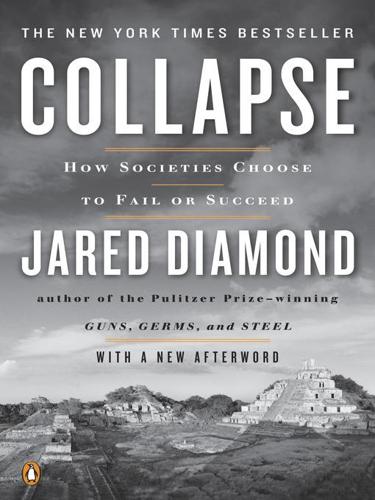
Collapse: How Societies Choose to Fail or Succeed
by
Jared Diamond
Published 2 Jan 2008
That climate change allowed the Inuit to enter northwestern Greenland from Canada around A.D. 1200—with big consequences for the Norse. Between A.D. 800 and 1300, ice cores tell us that the climate in Greenland was relatively mild, similar to Greenland’s weather today or even slightly warmer. Those mild centuries are termed the Medieval Warm Period. Thus, the Norse reached Greenland during a period good for growing hay and pasturing animals—good by the standards of Greenland’s average climate over the last 14,000 years. Around 1300, though, the climate in the North Atlantic began to get cooler and more variable from year to year, ushering in a cold period termed the Little Ice Age that lasted into the 1800s.
…
Those cold conditions were tolerable or even beneficial for the Inuit, who could hunt ringed seals, but were bad news for the Norse, who depended on growing hay. As we shall see, the onset of the Little Ice Age was a factor behind the demise of the Greenland Norse. But the climate shift from the Medieval Warm Period to the Little Ice Age was complex, and not a simple matter that “it got steadily colder and killed off the Norse.” There had been sprinklings of cold periods before 1300 that the Norse survived, and sprinklings of warm periods after A.D. 1400 that failed to save them. Above all, there remains the nagging question: why didn’t the Norse learn to cope with the Little Ice Age’s cold weather by watching how the Inuit were meeting the same challenges?
…
Khmer Empire, rise and fall of Kikori River King, Sarah Kirch, Patrick Kutubu oil field Laible, Rick land: ownership of prices of subdivision of Landa, Bishop Diego de landscape amnesia Lapita people Laxness, Halldór LEED (Leadership in Energy and Environmental Design) Leningrad, siege of Lewis and Clark Expedition Lihir Island, gold mine Lindbergh, Land Lindisfarne Island lithic mulches Little Ice Age logging, see forests Los Angeles Louisiana Purchase Love Canal site Maclean, Norman Magellan, Ferdinand Maginot Line Makatea Island Malaysia, deforestation in Malthus, Thomas Malthusian problems Mangaia Island Mangareva Island collapse of and Easter Island habitability of human impact on language of settlement of social structure of standard of living on stone structures of trade with Maori New Zealand Marine Stewardship Council (MSC) Marquesan Islands: language of and outlying islands social structure of stone structures of Maya agriculture cenotes (sinkholes) of Chichén Itzá Classic period of and climate collapse of society complex society of Copán deforestation by diet and droughts European conquest of lessons from Long Count calendar of map Mayapán and Mesoamerican culture population of power cycling of Tikal warfare of water management written records of McDonald’s Corporation McGovern, Thomas McIntosh, Bill McVeigh, Timothy Medieval Warm Period Mediterranean fruit fly Mesoamericans Mesopotamia methane Mid-Atlantic Ridge Miller, Chris Milltown Dam, Montana Mimbres society mining: in Australia bankruptcy proceedings in borax cleanup in coal industry in Colorado cyanide heap-leach method economic factors for hardrock insurance bonds in in Japan legacy problems in in Montana in New Guinea overburden component of platinum/palladium public attitudes toward regulation of social license to operate tailings from titanium toxic wastes in waste rock in and water quality Minoan Crete, collapse of MMSD (Mining Minerals and Sustainable Development) project Moche civilization, collapse of Montana agriculture in anti-government attitudes in author’s story bottom-up management in climate of Cook’s story economic history of environmental problems of Falkow’s story fishing in five themes illustrated in forests in Huls Farm hunting in as ideal case study Laible’s story map militias in mining in native and non-native species in Pigman’s story polarization in population in quality of life in schools in soil of taxes in water in Montana Land Reliance motor vehicles Mt.

Everything Under the Sun: Toward a Brighter Future on a Small Blue Planet
by
Ian Hanington
Published 13 May 2012
It’s also an embarrassment for those who, in the face of overwhelming scientific evidence, deny the existence of climate change—or admit that it’s happening but say we can’t and shouldn’t do anything about it. Of course, they will continue to repeat the same discredited points about “Climategate” and medieval warm periods and CO2 as plant food, and they’ll continue to take the advice of climate-change denial PR people like Tom Harris to bombard the media with opinion articles, letters to editors, and comments under online articles. Some people rightly point out that we should look at the science and not at who is paying for the research.
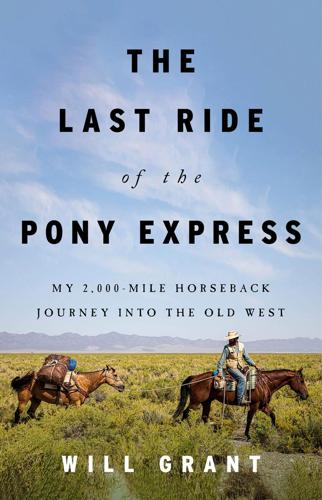
The Last Ride of the Pony Express: My 2,000-Mile Horseback Journey Into the Old West
by
Will Grant
Published 14 Oct 2023
Erg is a geological term for a sea of sand, and it’s derived from the Arabic word arq, meaning dune field. The dune field began forming during the last Ice Age from sediment eroded from the Rocky Mountains.4 Since its formation, the Sandhills erg has been periodically covered with vegetation and periodically a Sahara-like desert. As recently as the medieval warm period, from 900 to 1300, the dunes were bare and windblown.5 Even early settlers to the area reported large areas of sand, Nadine told me. Comparatively, though, very little sand is visible today. “The dunes are now fully vegetated,” she said. “But they say the Sandhills are always an inch or so from being a desert.”

Collapse
by
Jared Diamond
Published 25 Apr 2011
That climate change allowed the Inuit to enter northwestern Greenland from Canada around A.D. 1200—with big consequences for the Norse. Between A.D. 800 and 1300, ice cores tell us that the climate in Greenland was relatively mild, similar to Greenland's weather today or even slightly warmer. Those mild centuries are termed the Medieval Warm Period. Thus, the Norse reached Greenland during a period good for growing hay and pasturing animals—good by the standards of Greenland's average climate over the last 14,000 years. Around 1300, though, the climate in the North Atlantic began to get cooler and more variable from year to year, ushering in a cold period termed the Little Ice Age that lasted into the 1800s.
…
Those cold conditions were tolerable or even beneficial for the Inuit, who could hunt ringed seals, but were bad news for the Norse, who depended on growing hay. As we shall see, the onset of the Little Ice Age was a factor behind the demise of the Greenland Norse. But the climate shift from the Medieval Warm Period to the Little Ice Age was complex, and not a simple matter that "it got steadily colder and killed off the Norse." There had been sprinklings of cold periods before 1300 that the Norse survived, and sprinklings of warm periods after A.D. 1400 that failed to save them. Above all, there remains the nagging question: why didn't the Norse learn to cope with the Little Ice Age's cold weather by watching how the Inuit were meeting the same challenges?
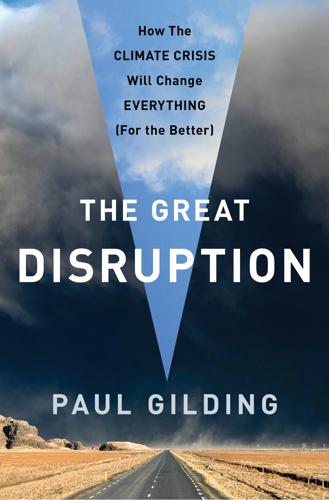
The Great Disruption: Why the Climate Crisis Will Bring on the End of Shopping and the Birth of a New World
by
Paul Gilding
Published 28 Mar 2011
Diamond’s work and that of others is enough to show that great civilizations can be brought to their knees by nature and that we must “choose” to survive. One of the societies analyzed by Diamond, the Maya of Central America, is also studied by Brian Fagan in his book The Great Warming. Fagan looked at the global effect on human societies of the medieval warm period between AD 800 and 1300. This period, when global temperatures were in some areas up to one degree warmer, brought down not only the mighty Mayan civilization and saw them abandon their temples on the Yucatán, but also the Cambodian civilization with its center at Angkor Wat and the largest preindustrial city in the world, and forced the relocation of the entire Puebloan or Anasazi cultures of the American Southwest.
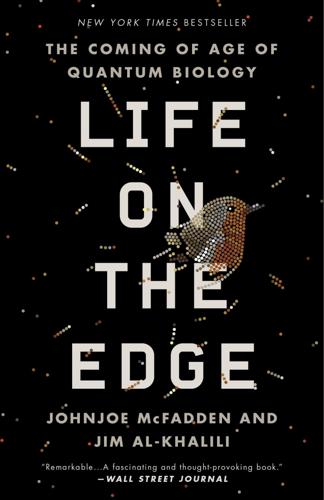
Life on the Edge: The Coming of Age of Quantum Biology
by
Johnjoe McFadden
and
Jim Al-Khalili
Published 14 Oct 2014
He wasn’t the first: it had already been discovered several times by stone age people who arrived from eastern Canada as early as 2500 BCE. But Greenland’s is a harsh and unforgiving environment, and those earlier cultures vanished, leaving only faint traces. Erik hoped to fare better, arriving during the so-called Medieval Warm Period when conditions were more clement; he therefore gave the island its current name, trusting that its promise of verdant pastures would lure his fellow countrymen westward. The ploy evidently worked, because a colony of several thousand was soon established and, initially at least, appeared to thrive.
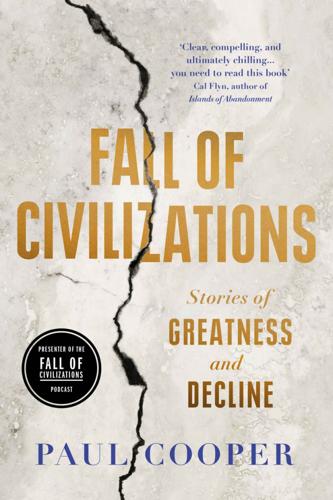
Fall of Civilizations: Stories of Greatness and Decline
by
Paul Cooper
Published 31 Mar 2024
New scientific evidence, including analysis of sediment cores, shows that land use in the centre of the city had reduced gradually for more than a hundred years before its collapse. It’s now thought that at least part of the story of the city’s downturn may have been caused by shifts in the region’s climate, and the global transition from the Medieval Warm Period to the Little Ice Age. Looking at the enormous canals to the south of Angkor, we see that around this time they became filled with a large amount of coarse-grained sand. This suggests a period of torrential rainfall and flooding, during which large silt deposits were swept down from the hills.

This Changes Everything: Capitalism vs. The Climate
by
Naomi Klein
Published 15 Sep 2014
And the organizers go to some lengths to mimic credible scientific conferences, calling the gathering “Restoring the Scientific Method” and even choosing a name, the International Conference on Climate Change, that produces an organizational acronym, ICCC, just one letter off from that of the world’s leading authority on climate change, the United Nations’ Intergovernmental Panel on Climate Change (IPCC), a collaboration of thousands of scientists and 195 governments. But the various contrarian theses presented at the Heartland conference—tree rings, sunspots, the Medieval Warm Period—are old news and were thoroughly debunked long ago. And most of the speakers are not even scientists but rather hobbyists: engineers, economists, and lawyers, mixed in with a weatherman, an astronaut, and a “space architect”—all convinced they have outsmarted 97 percent of the world’s climate scientists with their back-of-the-envelope calculations.8 Australian geologist Bob Carter questions whether warming is happening at all, while astrophysicist Willie Soon acknowledges some warming has occurred, but says it has nothing to do with greenhouse emissions and is instead the result of natural fluctuations in the activity of the sun.